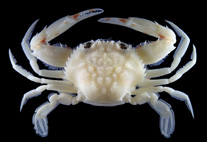Abstract
The Magpie Fiddler ray, Trygonorrhina melaleuca Scott 1954, is presently South Australia’s (SA) rarest fish, represented by only three museum specimens collected near Adelaide over the past 60 years and listed as Endangered in the IUCN Red List of Threatened Species. However, there is some doubt as to whether the Magpie Fiddler Ray is a different species from the widespread and common Southern Fiddler Ray, Trygonorrhina dumerilii (Castelnau 1873), resulting in two very contrasting scenarios for marine conservation. If the Magpie Fiddler Ray is a black and white patterned variant of the Southern Fiddler Ray then it will be removed from the Red List and appear as a synonym of T. dumerilii. Conversely, if it proves to be a different species then it remains SA’s rarest fish species and highly data deficient. We analysed mtDNA and the largest ever nuclear gene dataset (>4,000 loci) applied to chondrichthyan species level systematics from the most recently collected Magpie Fiddler Ray specimens and a geographically representative selection of Southern Fiddler Rays to determine the species status of this enigmatic ray. We found that the Magpie Fiddler Rays share a mitochondrial haplotype with 23 Southern Fiddler Rays and are not differentiated from 35 Southern Fiddler Rays at more than 4000 SNPs derived from DArTseq data. The morphological trait values that are putatively diagnostic for the Magpie Fiddler Ray fall within the range of variation observed among Southern Fiddler Rays. Our analyses are consistent with the notion that the Magpie Fiddler Ray is a rare colour and pattern variant of the widespread and abundant Southern Fiddler Ray. We also identified two hybrids between the Eastern and Southern Fiddler Rays, only the third time that hybrids have been identified in nature in chondrichthyans. Our results provide critical guidance in the assessment of its conservation status and an ending to a 60 year old conundrum for marine conservation.

